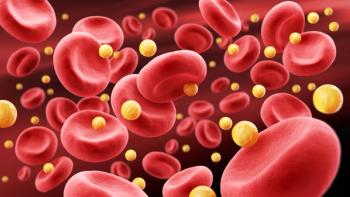
The Evolving Role of the Pharmacist in HEOR: Bridging Clinical and Economic Evidence
Pharmacists are redefining health care by bridging clinical and economic evidence, making a real difference in patient outcomes through health economics and outcomes research (HEOR).
When I first began my career in pharmacy, I never imagined how important health economics and outcomes research (HEOR) would become. Back then, our focus was primarily on counseling patients and ensuring safe medication use. Today, as treatments become more complex and health care budgets tighten, HEOR has emerged as a vital bridge between clinical practice and economic realities. Pharmacists are uniquely positioned to translate these data into something that is effective in patients’ lives.
At its heart, HEOR seeks to answer a simple yet crucial question: Is therapy worth its cost? This field brings together clinical, economic, and humanistic outcomes to help health systems and payers decide which treatments provide the best value. One of the core tools in HEOR is cost-effectiveness analysis, which compares different treatments and measures them in terms of quality-adjusted life years (QALYs). This metric combines how long and how well patients live, offering a more complete picture of treatment value.¹ Sometimes, a therapy that looks expensive on the surface might actually save money in the long run by preventing hospitalizations or improving quality of life.
Budget impact models are another part of the puzzle. These models forecast how a new treatment will affect overall spending, which is essential for payers who need to plan their budgets.² These models can spark intense discussions about whether a therapy should be added to the formulary, with pharmacists often providing context on how the numbers translate to real-world practice. Real-world evidence is equally valuable because it captures how treatments perform outside the controlled setting of clinical trials.³ Real-world data often reveal surprises—a therapy is not as effective in everyday practice, or patients struggle with adherence. These insights can shape better decisions that truly impact patient care.
Pharmacists bring something special to this conversation. Their training and experience allow them to interpret clinical trial data and blend it with real-world outcomes to get a fuller picture of a therapy’s value. I have often found that the numbers alone do not tell the whole story. It takes someone who understands the clinical and human sides of patient care to bridge that gap. Educating patients about therapy options and helping them manage adverse effects are everyday tasks for pharmacists, but they also directly impact how well a therapy works in the real world. Education can improve adherence, which in turn makes treatments more cost-effective by reducing complications and hospital visits.
Recently, I engaged in a project at a large health system evaluating a new biologic therapy for moderate to severe psoriasis. Working closely with health economists, our team developed a budget impact model that used real-world adherence data.⁴ We discovered that although the therapy had a high up-front cost, it significantly reduced hospitalizations and improved quality of life, resulting in a favorable cost-effectiveness ratio. That experience demonstrated how pharmacists can play a key role in translating complex economic analyses into practical recommendations that benefit patients.
Importantly, pharmacists often function as communicators of HEOR findings. I have had many conversations with physicians, payers, and even patients, helping them make sense of what the data mean. Whether it is explaining cost-effective results to a busy physician or discussing adverse effects and adherence with a patient, pharmacists can break down the numbers into something meaningful. This skill builds trust and ensures that decisions are based on solid evidence rather than guesswork.
Looking ahead, I believe pharmacists are in the perfect position to lead the charge toward value-based care. We have always been focused on improving patient outcomes, but now we can add another layer by making sure therapies are not just effective but also economically sustainable. By investing in HEOR training and working closely with other health care professionals, pharmacists can have an even greater impact. In the end, it is about making sure every patient gets the best possible care and that the health care system remains strong enough to keep providing it.
REFERENCES
1. Garrison Jr LP, Pauly MV, Willke RJ, Neumann PJ. An overview of value, perspective, and decision context–a health economics approach: an ISPOR special task force report [2]. Value Health. 2018;21(2):124-130. doi:10.1016/j.jval.2017.12.006
2. Sanders GD, Neumann PJ, Basu A, Brock DW. Recommendations for conduct, methodological practices, and reporting of cost-effectiveness analyses: second panel on cost-effectiveness in health and medicine. JAMA. 2016;316(10):1093-1103. doi:10.1001/jama.2016.12195
3. Makady A, de Boer A, Hillege H, Klungel O, Goettsch W. What is real-world data? a review of definitions based on literature and stakeholder interviews. Value Health. 2017;20(7):858-865. doi:10.1016/j.jval.2017.03.008
4. Feldman SR, Zhao Y, Shi L, Tran MH. Economic and comorbidity burden among patients with moderate-to-severe psoriasis. J Manag Care Spec Pharm. 2015;21(10):874-888. doi:10.18553/jmcp.2015.21.10.874
Newsletter
Stay informed on drug updates, treatment guidelines, and pharmacy practice trends—subscribe to Pharmacy Times for weekly clinical insights.


















































































































































































































